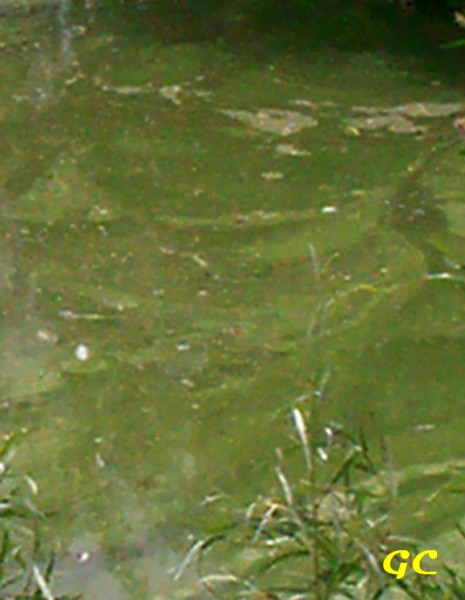Blue-Green Algae Bloom
 Recently, news of green algae tides suddenly carpeted many large water bodies in China and elsewhere. T
he algae is called Blue-green Algae or Cyanobacteria (derived from the colour of Cyan), commonly known as pond scum.
Blue-green algae exist in ponds, slow-moving streams and lakes and the algae are actually a unicellular bacterium.
Recently, news of green algae tides suddenly carpeted many large water bodies in China and elsewhere. T
he algae is called Blue-green Algae or Cyanobacteria (derived from the colour of Cyan), commonly known as pond scum.
Blue-green algae exist in ponds, slow-moving streams and lakes and the algae are actually a unicellular bacterium.
The microscopic algae belong to one of the largest groups of bacteria. On the earth,
they have already lived for billions of years and they are always abundant in natural fresh water.
When the weather turns hot, they can multiply rapidly into large colonies in waters enriched with nutrients like nitrogen or phosphorous.
Then, the colonies will float to the surface and aggregate into unsightly layers or mats.
Blue-green algae are photosynthetic and an important element in the food chain of the lakes and ponds.
The algae sometimes produce toxins and store them within the algae cell. When the cell is broken open, the toxins are released into the water.
The toxins may cause rash, irritation, stomach cramps, fever, headaches, nausea, seizures, paralysis, etc.
The presence of blue-green algae may not always equate with a contamination, but only sophisticated and expensive tests can rate the water to be drinkable or usable.
Settlement Pond (Toronto, Ontario)
Report - Jiangsu, China
In a couple of months ago, a thick carpet of blue-green algae began covering the Taihu Lake of Jiangsu Province in eastern China.
The smelly green slime had cut off the drinking water for two millon people along the lakeside City of Wuxi.
During this crisis, the residents had to rely on bottled potable water transported from the outside and were forced
to flee to nearby towns from the smell at the weekends. Finally, the local authorities diverted water from the Yangtze
River to flush out the algae and used chemicals to kill the algae. The workers had also collected 6,000 tons of algae from the lake.
(source: Xinhua News Agency, June 2007)
Chinese Premier Wen Jiabao visited a resident and drank boiled tap water to inspect the water quality in Wuxi on June 29.
"We need to take environmental management of the three lakes as a state project and put it
at a more prominent, pressing and important position," Wen said. He also said that the priority was to protect the
lakes from further pollution and ensure the safety of drinking water for the local residents. He instructed the local officials
to strengthen supervision and ban factories from discharging pollutants into the lakes,
urged to draft new regulations on the environmental protection of the three lakes, and also said China would adopt a new national compulsory drinking water safety standard from that month to secure safe water supplies for citizens. (source: China Daily, July 2007)
Report - Quebec, Canada
The presence of blue-green algae was discovered in several areas - Saguenay-Lac-Saint-Jean, Saguenay River, Saint-Charles-de-Bourget, and Saint-André. The ministries of the Environment and of the Parks and other local authorities in Quebec had warned the residents not to consume the infected water by the cyanobacteria; swimming was also not recommended. The Public Health department also advised the fishermen to consume in moderation the fish caught from the Saint-Jean Lake(July 2007).So, is the blue-green algae bloom a temporary phenomenon?
Or, is it becoming a recurring problem for the earth?
[Sources on the algae - Wisconsin Department of Natural Resources, U.S.A. and Wikipedia]
[Top|Middle] of Page